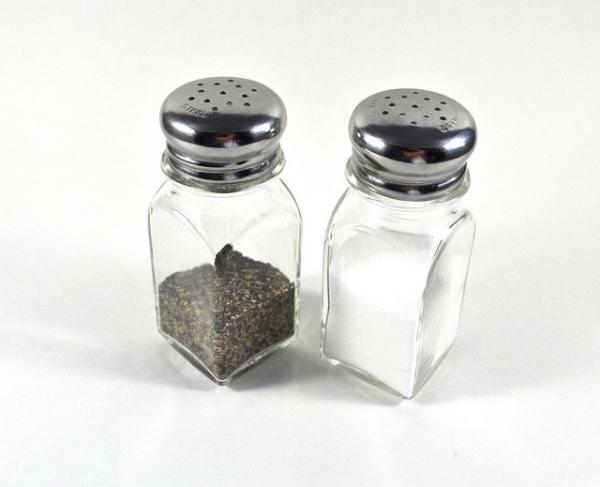Consuming salt, sodium chloride is demonstrably associated with increased blood pressure, but the effect is small, roughly a half teaspoon raises your blood pressure by 2mm (for reference, the recommended daily intake is approximately two teaspoons) And hypertension, in its turn has been associated with cardiovascular disease. So for many, there is a chain of causality where reducing salt reduces hypertension, and that reduction subsequently reduces cardiovascular disease. While seeming logical new evidence demonstrates that logic to be flawed.
The Current Research
The Lancet report utilizes data from the Prospective Urban Rural Epidemiology (PURE – have to love those acronyms) study, involving 168,000 adults, age 35-70, in 664 global urban and rural communities, representing low, middle and high-income countries
In addition to the usual demographics and health information, a standardized measure of the excretion of sodium and potassium in the urine was used as a surrogate marker for sodium and potassium intake. The study focuses on those adults without known cardiovascular disease upon entry to the study who were followed for a mean of 8 years. 100,000 individuals across 369 of these communities represent the sample contributing to the results of sodium and high blood pressure; about 82% of those individuals across 255 communities contributed to the findings concerning cardiovascular outcomes.
- During the study period, there were 3.8% deaths and 4.2% cardiovascular events, including heart attack, stroke, heart failure and cardiac-related death.
- Mean sodium intake was estimated to be 4.7 g/day but substantially higher in Chinese communities
- Mean potassium intake was 2.2 g/day.
- When aggregated by communities sodium intake was strongly associated with increased blood pressure, increasing by nearly 3mm (as compared to the 2mm mentioned initially) for each ½ teaspoon of salt. But this effect was only seen in communities were the salt intake was more than 5 g/day. In those communities with lower salt intake, the inverse relationship was seen - increased salt lowered blood pressure. This held true for systolic and diastolic blood pressure values.
- Community aggregated intake of potassium had no impact on blood pressure.
Let me pause for a moment to point out, that the study replicates the relationship between sodium and blood pressure, but it is not a linear relationship as expressing the results as a 3mm increase/g of increased daily sodium suggests. The relationship is more J shaped – physiologic in the mid-range, pathologic in the extremes. Here is what they found about sodium intake and cardiovascular events.
- Community aggregated sodium intakes and overall cardiovascular events were associated.
- The association was only demonstrated for strokes and just in the group with the highest sodium intake.
- There was no association of sodium intake with heart attacks or heart failure. And an association with that composite score was found only because of stroke’s “unbalanced” contribution.
- Adjustments for age, gender, country and other factors resulted in no association of sodium intake and heart attacks, cardiac deaths or the composite score. And in some instances, increased sodium intake resulted in less cardiovascular events. Again, the J-shaped curve.
- Community aggregated potassium intake demonstrated an inverse relationship. That is, potassium appeared protective from cardiovascular events.
What have we learned?
While the study did replicate the findings that sodium has a limited impact upon blood pressure, it demonstrated no real association of sodium with cardiovascular outcomes singly or when lumped together as a composite score, as many studies do. And the only outcome to be associated with sodium intake, stroke, has a stronger linkage to high blood pressure than the other cardiovascular risks; and in any case, the effects were limited to the population ingesting the highest levels of salt.
The findings of potassium can be interpreted in one of two ways. To those connecting dots directly, potassium is exerting a protective effect, and we should set recommended daily minimum requirements. But for those who are a bit freer in their linkages note that potassium is found in no small measure in fruits and vegetables, in which case potassium may well be a marker for a better diet rather than a protective agent.
This brings us to that J shaped curve, a curve that reflects a deleterious effect of sodium intake only in the extremes, too little and too much – as the authors point out “…the expected relationship between an essential nutrient and health.”
Are current guidelines treat the effect of sodium in our diet as linear identifying thresholds and cut-offs. But our physiologic response, that J-shaped curve, emphasizes a range of moderation with concern only in the extremes. Certainly, the data from this study suggests that our current threshold is too stringent, but that may be of little consequence since no studies are showing the efficacy of our guidelines impacting our sodium intake or subsequent health.
Our health involves so many interacting variables that it is foolish to believe that any study, including this one, reveals “the” cause and answer. It is more foolish to set policy based on studies ignoring our physiology. It continues to be true, “everything in moderation.” And moderation remains a slippery concept, let alone number.
Source: Urinary sodium excretion, blood pressure, cardiovascular disease, and mortality: a community-level l prospective epidemiological cohort study Lancet DOI:10.1016/S0140-6736(18)31376-X




